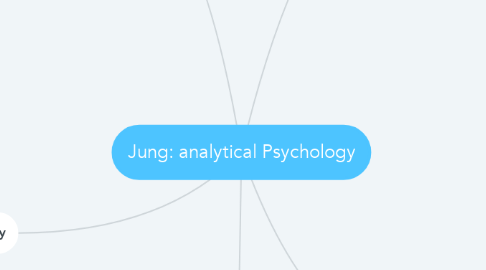
1. Psychological Types
1.1. Attitudes
1.1.1. predispositions to act
1.1.1.1. introversion
1.1.1.1.1. subjective perceptions
1.1.1.2. extraversion
1.1.1.2.1. orientation toward the objective world
1.2. Functions
1.2.1. 4 functions
1.2.1.1. thinking
1.2.1.2. feeling
1.2.1.3. sensation
1.2.1.4. intuition
1.2.2. rational functions
1.2.2.1. thinking and feeling
1.2.3. irrational functions
1.2.3.1. sensation and intuition
2. Development of Personality
2.1. Stages of Development
2.1.1. childhood
2.1.1.1. birth until adolescence
2.1.2. youth
2.1.2.1. puberty until middle life
2.1.2.2. real world
2.1.3. middle life
2.1.3.1. 35 or 40 until old
2.1.3.1.1. adopting an introverted
2.1.3.1.2. subjective attitude
2.1.4. old age
2.1.4.1. psychological rebirth
2.1.4.2. self-realization
2.1.4.3. preparation for death
2.2. Self-Realization
2.2.1. psychological rebirth
2.2.2. highest level of human development
3. Jung’s Method of Investigation
3.1. Word Association Test
3.1.1. uncover complexes embedded
3.1.1.1. personal unconscious
3.1.2. utter the first word
3.1.2.1. mind
3.2. Dream Analysis
3.2.1. explaining past events
3.2.2. decisions about the future
3.3. Active Imagination
3.3.1. concentrate on a single image
3.4. Psychotherapy
3.4.1. help neurotic patients become healthy
3.4.2. treated old people differently than the young
4. Levels of Psyche
4.1. Conscious
4.1.1. Images sensed by the ego
4.1.1.1. conscious side of personality
4.1.1.2. secondary to the self
4.2. Personal Unconscious
4.2.1. psychic images not sensed by the ego
4.2.1.1. personal experiences
4.2.1.2. ancestors' experiences
4.2.2. complexes
4.2.3. various archetypes
4.3. Collective Unconscious
4.3.1. beyond personal experiences
4.3.2. repeated experiences
4.3.3. not inherited
4.4. Archetypes
4.4.1. collective unconscious
4.4.2. repeated experiences of ancestors
4.4.2.1. dreams
4.4.2.2. fantasies
4.4.2.3. delusions
4.4.2.4. hallucinations
4.4.3. acquire their own personality
4.4.3.1. persona
4.4.3.1.1. side of personality
4.4.3.2. shadow
4.4.3.2.1. dark side of personality
4.4.3.3. anima
4.4.3.3.1. men
4.4.3.4. animu
4.4.3.4.1. women
4.4.3.5. great mother
4.4.3.5.1. nourishment
4.4.3.5.2. destruction
4.4.3.6. wise old man
4.4.3.6.1. wisdom and meaning
4.4.3.7. hero
4.4.3.7.1. image who vanquishes evil
4.4.3.8. self
4.4.3.8.1. image
5. Dynamics of Personality
5.1. Causality and Teleology
5.1.1. middle position
5.1.1.1. philosophical issues
5.1.2. motivated
5.1.2.1. past experiences
5.1.2.2. expectations of the future
5.2. Progression and Regression
5.2.1. self-realization
5.2.1.1. external
5.2.1.2. internal
5.2.2. Progression
5.2.2.1. adaptation to the outside world
5.2.3. Regression
5.2.3.1. adaptation to the inner world
